
 |
Home | Overall References Main | Contact |
Updated: June 2011. Click on an image to see the FULL size with a caption.
The following reference information is included:
My rating scale:
 Excellent ;
Excellent ;
 Very Good ;
Very Good ;
 Good ;
Good ;
 Fair ;
Fair ;
 Poor.
Poor.
Click on an image to see the FULL size with a caption.
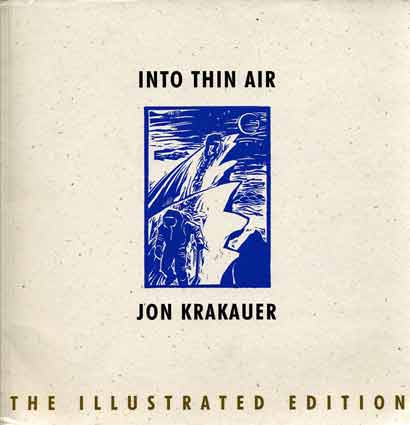
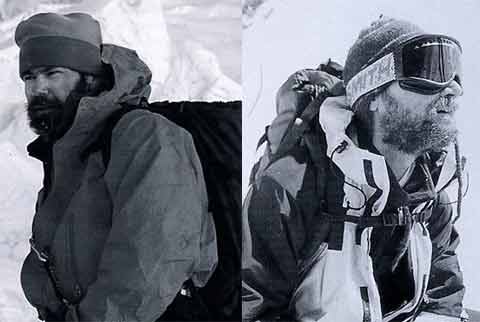
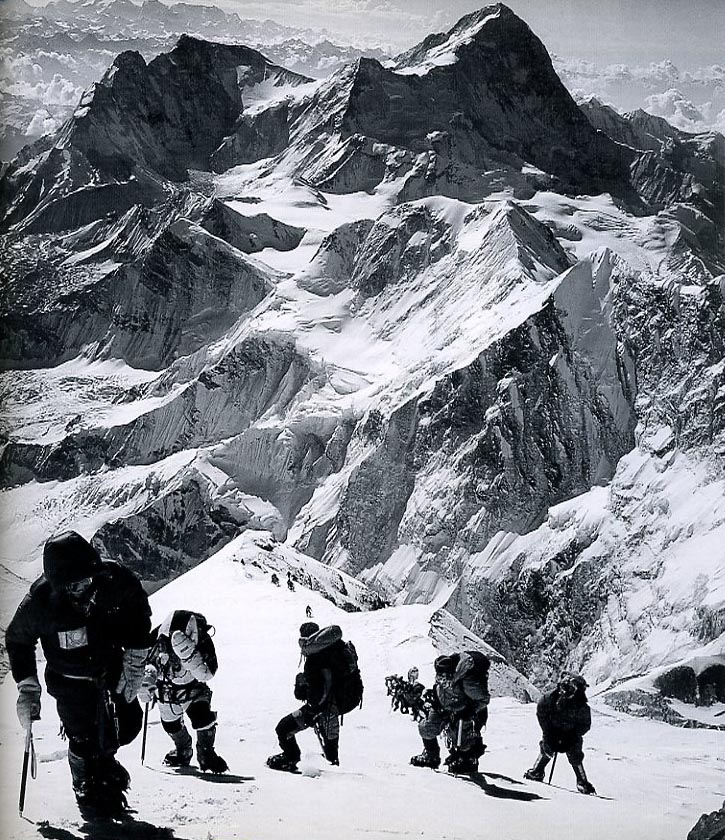

by Jon Krakauer. Published 1997. The illustrated edition was published 1998. One of Michael Chessler's Top 100 Mountaineering Books. My personal favourite mountaineering book of all time. Krakauer provides a day-by-day journal to tell the chilling, harrowing and controversial story about the 1996 Everest season when 12 climbers were killed. He describes the trek to Everest Base Camp, the acclimatization climbs to Camps One, Two and Three, the final climb by 34 climbers towards the Everest Summit, the descent to the South Col, the killer storm, the rescues and failed rescues, and the descent off the mountain. The Illustrated Edition contains almost 250 b/w photos to bring the story to visual life. The photos are by Jon Krakauer, Neil Beidleman, Klev Schoening, Scott Fischer and others.
"In March 1996, Outside magazine sent [Jon Krakauer] to participate in, and write about a guided ascent of Mount Everest", on Rob Hall's Adventure Consultants expedition. In addition to Hall's eight clients, Scott Fischer's Mountain Madness guided expedition also had eight clients. Scott Fischer: "We've got the big E figured out ... we've built a yellow brick road to the summit." Krakauer did reach the Everest summit on May 10, 1996 at 13:10. Worrying about his dwindling oxygen, he left the summit after just five minutes, finally making it back to his tent on the South Col at about 18:45, "more exhausted than I'd ever been in my life." "The storm abruptly metastasized into a full-blown hurricane, and the visibility dropped to less than twenty feet ... nineteen men and women were stranded up on the mountain by the storm, caught in a desperate struggle for their lives."
Two guides, two Sherpas, and seven clients had reached the South Col, but "staggered blindly around in the storm, growing ever more exhausted and hypothermic." In a small break in the storm, Camp Four was slightly visible. "Pittman, Fox, Weathers, and Namba were too feeble to walk", so Neil Beidleman, Klev Schoening, Lene Gammelgard, the two Sherpas, and Mike Groom stumbled off into the storm, making it back to the tents on May 11 at 00:45. Fisher's guide Anatoli Boukreev had descended to Camp Four in advance of his clients, and was the only strong climber left. Boukreev courageously single-handedly attempted to brave the storm to rescue the missing climbers, but had to return to the tents. But Boukreev didn't give up. He went out again by himself and was able to find the climbers, and brought back first Charlotte Fox and then Sandy Pittman and Tim Madsen. Yasuko Namba was dead and Beck was a lost cause.
Rob Hall waited for Doug Hansen to reach the summit at around 16:00, but Hansen turned into a "zombie" on the descent. Andy Harris picked up oxygen from the South Summit and walked back up towards Hall and Hansen. "at 4:43 on the morning of May 11 ... [Hall] had descended to the South Summit. And at that point neither Hansen nor Harris was with him." The continuing storm on May 11 stopped the Sherpa's rescue attempt. Rob's pregnant wife in New Zealand was patched through to speak to Rob late on May 11, " 'I love you. Sleep well, my sweetheart. Please don't worry too much.' These would be the last words anyone would her him speak."
Scott Fischer was not very strong on summit day, and reached the summit late at 15:40. Lopsang Jangbu Sherpa was able to help Fisher descend, but he collapsed just below the Balcony about 400m above the South Col. Anatoli Boukreev reached Fisher late on the evening of May 11. "Down suit is unzipped, pulled off his shoulder, one arm is outside clothing. There is nothing I can do. Scott is dead."
Amongst the tragedy, there was a ray of joy. Beck Weathers collapsed on the South Col late on May 10 and was left for dead. Miraculously he regained consciousness on May 11 and stumbled back to Camp Four at 16:35 with his "bare right hand, naked to the frigid wind and grotesquely frostbitten ... outstretched ... [looking like] a mummy in a low-budget horror film." Beck miraculously survived the night and the IMAX team with David Breashears and Ed Viesturs helped him descend to Camp Two the next day. Lt. Colonel Madan Khatri Chhetri rescued Beck from Camp Two in his helicopter on May 13.
Krakauer's writing is excellent, providing enough information, but keeping the story tight and to the point. He provides his inner thoughts and comments candidly on his own performance and mistakes, and the other clients and guides. Rob Hall's last minutes speaking to his wife are almost too heartbreaking to read. The photos are absolutely excellent. Although Krakauer is critical of Anatoli Boukreev's guiding practices, he fully acknowledges Toli's extraordinary performance in single handedly rescuing three clients during the storm. For a rebuttal from Anatoli Boukreev, read The Climb.

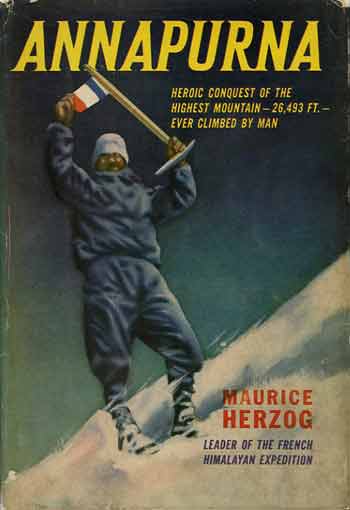
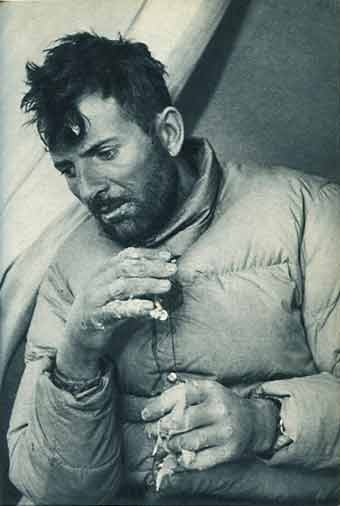

by Maurice Herzog. First published in English in 1952. My second favourite Mountaineering book of all time! One of Michael Chessler's Top 100 Mountaineering Books. This is the most widely-read and influential mountaineering book ever published. Annapurna was the first 8000m mountain to be climbed, with Herzog becoming a national hero. I have two versions of the book - New York 1953 (cover shown) and London 1952. Both books have 4 pages of colour photos, 24 pages of b/w photos, and an 8-page fold out map with a b/w photo. However, the New York book has 11 photos not in the London, and the London book has 10 photos not in the New York.
Because the maps at the time were incorrect, the team initially floundered looking for a route to either Dhaulagiri or Annapurna. Deciding that Dhaulagiri was too difficult, they found their way to the North Face of Annapurna. They quickly, and luckily, raced up the mountain. On June 3, 1950 Maurice Herzog and Louis Lachenal reached the summit of Annapurna without oxygen.
The descent turns into a nightmare, and is better than any fictional writer could dream up. Herzog loses his gloves and his hands become frostbitten and Lachenal's feet become frostbitten. Both barely make it back to camp. Lionel Terray and Gaston Rebuffat help them, but the weather turns into a white-out. They wander around helplessly before finding a crevasse to spend the night. They were caught in an avalanche. The medical treatment they received by the expedition doctor was unbelievable and almost primitive.
"The summit was a corniced crest of ice, and the precipices on the far side which plunged vertically down beneath us, were terrifying, unfathomable. Our mission was accomplished. But at the same time we had accomplished something infinitely greater. How wonderful life had become! What an inconceivable experience it is to attain one's goal and, at the very same moment, to fulfill oneself. I was stirred to the depths of my being. Never had I felt happiness like this - so immense and yet so pure."
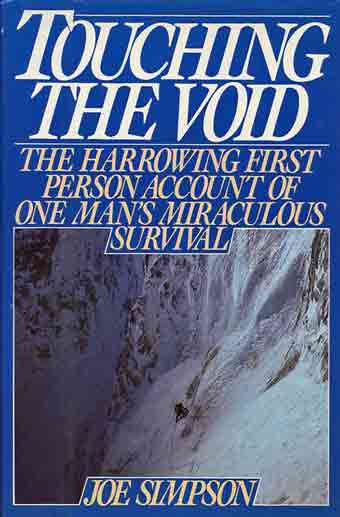
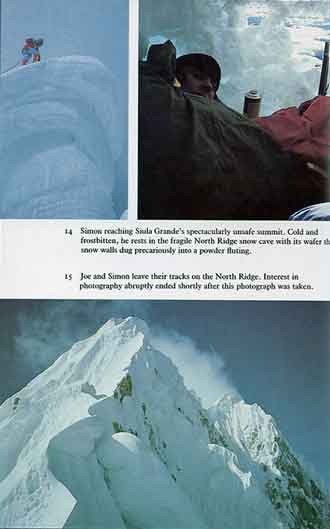
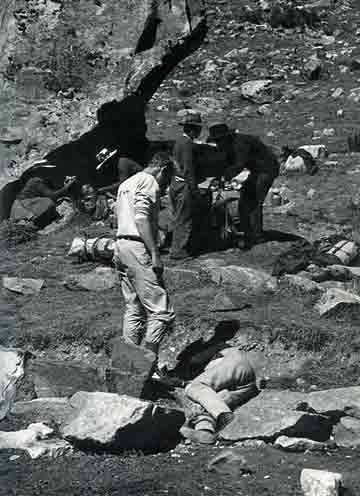

by Joe Simpson. If this was a fiction book, nobody would believe it. It's too far fetched. It was the winner of the 1988 Boardman Tasker Prize for Mountain Literature and was subsequently made into a movie in 2003. Simpson tells the story with the perspective from Simon Yates in the key sections.
Joe Simpson and Simon Yates make the first ascent of the west face of Siula Grande (6344m) in Peru in 1985. The descent is extremely dangerous and disaster strikes when Joe falls on the ridge and breaks his right leg. "I felt a shattering blow in my knee, felt bones splitting, and screamed." When Simon got to Joe, he thought, "You're fucked matey. You're dead."
Simon is roped to Joe and lowers him down, rope length by rope length. Disaster strikes again when Joe falls over a cliff and dangles in the air. Simon held Joe for an hour, but was starting to slip off. Joe: "I was pulling him off. I hung still, and waited for it to happen. Any minute, any minute ." Simon cut the rope, dropping Simpson into a crevasse.
Yates believed Simpson was dead, but in fact he had survived the fall. He miraculously crawled out of the crevasse, but was still over 8km from base camp. He spend the next three days crawling down the glacier and moraine days, without food and only splashes of water from melting ice. Almost completely delusional, he reached base camp a few hours before Yates intended to leave the camp to return to civilization.
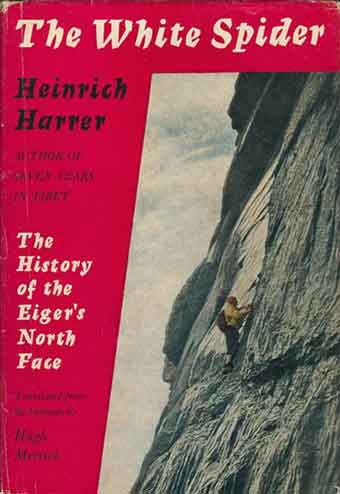
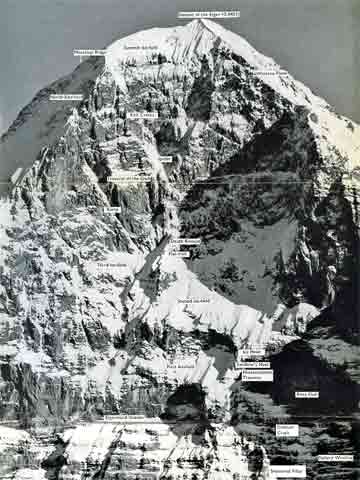
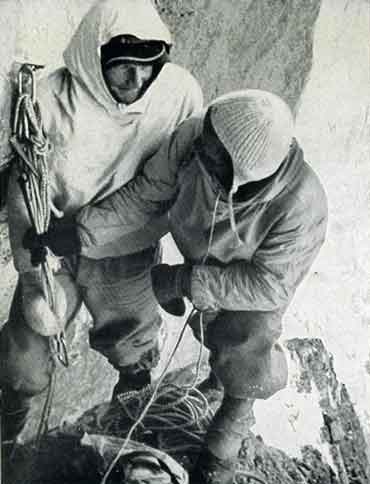

by Heinrich Harrer, of Seven Years In Tibet fame. First published in English in 1959. One of Michael Chessler's Top 100 Mountaineering Books. In the 1930s the Eiger Nordwand (North Wall) was considered the last and greatest of Alpine problems left in the world. The White Spider is a portion of the upper face where snow-filled cracks radiate from an ice-field resembling the legs of a spider. The first edition has 4 pages of colour photos and 36 pages of b/w photos, many more than later editions.
The book begins by describing the early attempts to climb the Nordwand, including the harrowing stories of Max Sedlmayer and Karl Mehringer who froze to death in 1935, and Toni Kurz, Andreas Hinterstoisser, Edi Rainer and Willy Angerer who died in 1936.
Harrer then tells his first-hand story of the first ascent. Harrer and Fritz Kasparek started their climb on July 21, 1938. A day later, Anderl Heckmair and Ludwig Vörg started their attempt and quickly caught up to them. They combined into one team of four, led by Heckmair. The four men were caught in an avalanche as they climbed the Spider, but all had enough strength to resist being swept off the face.
"We were all on a single rope. ... One hundred feet above me stood Vorg, safeguarding Heckmair, as he grappled with icy rock, treacherous ice gullies, and snowslides high above us in the mists and driving snow." Heckmair fell as he led the difficult Exit Cracks, but was caught by Vorg, his crampons piercing Vorg's hand in the process. On July 24, 1938 Heckmair, Vörg, Kasparek, and Harrar completed the first ascent of the Eiger Nordwand.
Harrer then continues the Eiger story, including the dramatic rescue of Claudio Corti trapped high on the face near the Exit Cracks in 1957. Harrer added a few more chapters in 1964, including the story of Adolf Mayr who fell to his death in 1961 trying for the first solo ascent. After reaching the Second Icefield in 1962 Barry Brewster was struck by a falling rock. His partner Brian Nally tried to care for the dying man, but eventually Brewster fell from the face. Famed British mountaineers Chris Bonington and Don Whillans stopped their attempt to rescue the now disoriented Nally.
The stories of the tragic attempts are chilling, the first ascent riveting, the entire book spellbinding. This book is a great history of the Eiger Nordwand. The appendix is better in later editions because Harrer corrects some of the ascents, given more information like finding the bodies of Nothdurft and Mayer in 1961, and includes the list of ascents up to the 1970s. The photos are very good.
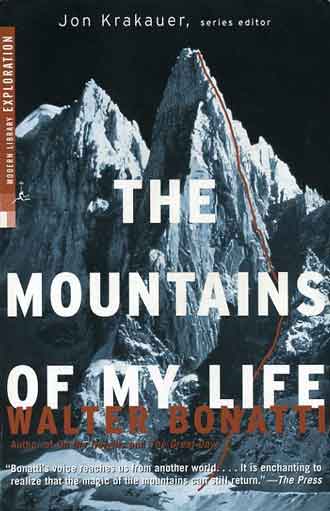
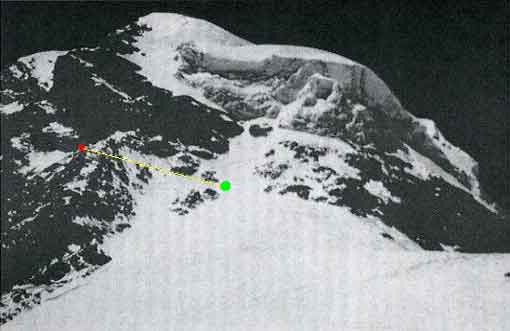
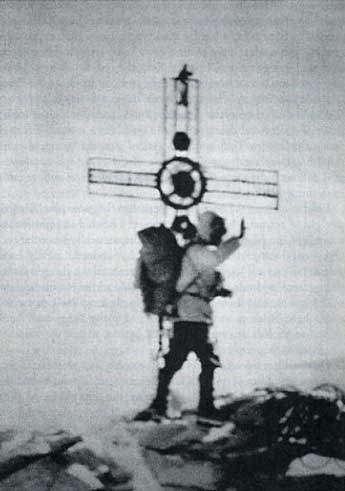

by Walter Bonatti, translated by Robert Marshall. This book collects the classic writings of world-famous mountaineer Walter Bonatti (many from On The Heights and The Great Days). The cover is Bonatti's route on the south-west pillar of the Aiguille du Dru. The book has 26 pages of b/w photos, an additional 3 b/w photos, and 8 route maps.
The book starts with his climbs on Grande Jorasses, Grand Capucin and Lavaredo in winter. He was then invited on the 1954 Italian K2 expedition, where Lino Lacedelli and Achille Compagnoni became the first to summit K2. Controversy struck when the expedition leaders accused him of turning back before delivering needed oxygen to them below the summit. After staying quiet for 50 years, Lacadelli finally published his view of what happened, collaborating Bonatti's story.
Bonatti continued on to execute many great climbs, including a solo climb of a new route on the south-west pillar of the Aiguille du Dru, Cerro Torre, the first ascent of Gasherbrum IV, the North Face of the Grande Jorasses in winter, an unprecedented solo ascent of the north face of the Matterhorn in winter, and the tragic story of the death of four mountaineers from exhaustion attempting to be the first to climb the Central Pillar of Freney in June 1961.
This is one of my top 10 favourite mountaineering books of all time. The photos are good. Bonatti packs his pages with a total punch, introspective, exciting, and dangerous. You can just about feel the bitter cold.
About a quarter of the book is dedicated to K2 and the aftermath. Walter Bonatti and Mahdi carried the oxygen bottles to Camp IX on July 30, 1954. But Campagnoni had intentionally moved the camp from the planned site so Bonatti could not try for the summit. Bonatti and Mahdi survived the bivouac at 8100m, but Madhi had frostbitten toes.
In 1964 a reporter printed a 10th anniversary article finally bringing out into the open Desio and Campagnoni's views of what really happened. They accused Bonatti of treachery, trying for the summit and using the oxygen. Bonatti filed a libel suit held in Turin in 1966, and was exonerated. Bonatti then does his own analysis and uses diagrams and charts to prove that the oxygen had not run out. In The Price Of Conquest from 2004, Lacedelli disagrees with Bonatti, saying that the oxygen had in fact run out.
Marshall concludes quite convincingly: "The whole affair started because Mahdi thought he and Bonatti were making an independent attempt on the summit. ... Bonatti made a very convenient villain and an ideal sacrificial goat. He was never able to defend himself because he was never accused directly."
In 2008 the Club Alpino Italiano recognised officially that Bonatti's version of the ascent was correct. Compagnoni and Lacedelli reached the summit with oxygen after putting the life of Bonatti and the hunza Madhi in serious risk by denying them help at 8100m while they carried the oxygen supplies to the last camp.

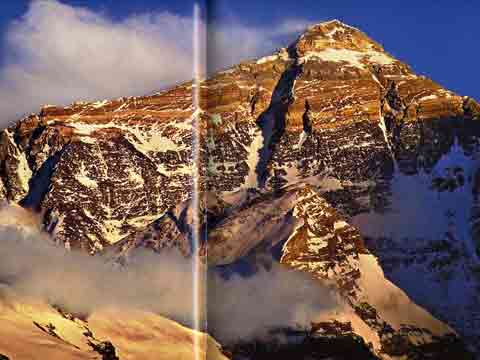
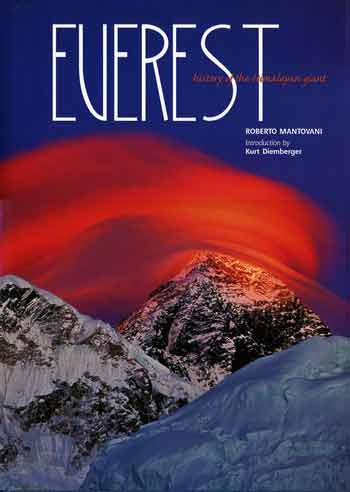
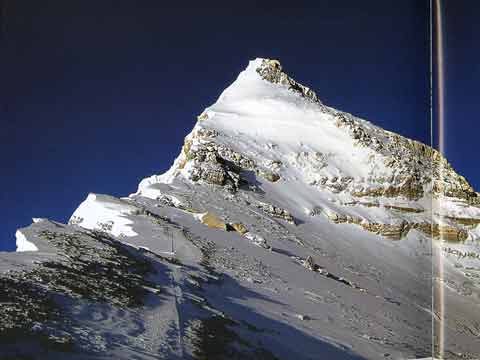

by Roberto Mantovani, introduction by Kurt Diemberger. Originally published in 1997, this book was republished in 2007, with 36 pages added with updates for the climbs from 1995 to 2006, including even more spectacular photos.
This is an excellent coffee-table type book with spectacular photos and some good information. The book contains a detailed history of the discovery of the mountain by Sir George Everest, the attempts to climb Everest over the years from Mallory to Hillary, and the significant climbs since then.

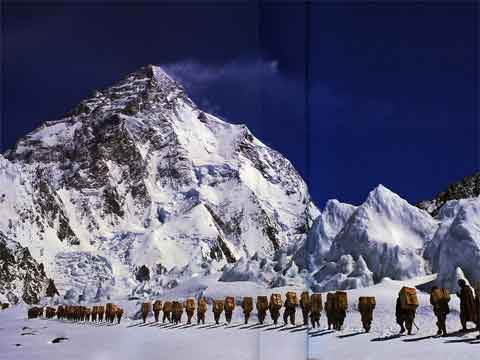
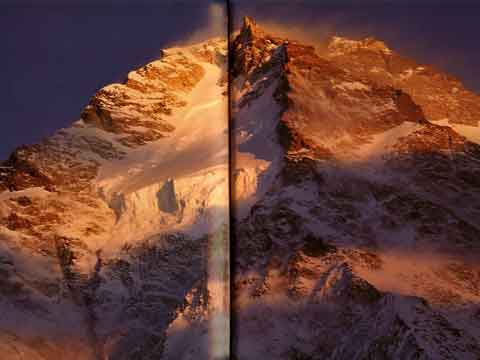
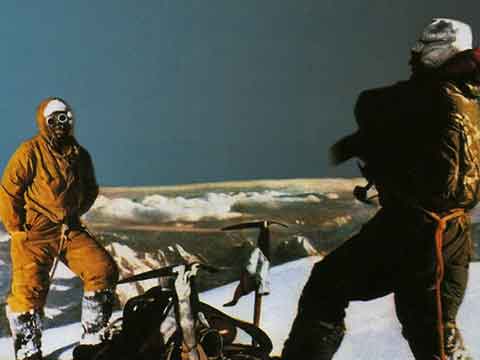

by Roberto Mantovani, Kurt Diemberger. Published 2004. The previous edition was called K2: Challenging The Sky was published in 1995. A beautiful coffee-table type book with spectacular photos and good information mostly from Kurt Diemberger's book Endless Knot. The book covers the history of climbing K2 from the earliest explorations up to the latest ascents completed in the 1990s.
Kurt Diemberger: A mountain as large and difficult as K2, with its height of 8,616 metres, and its unusually steep faces, and absolute atmospheric variability, is a whole "stage" higher than other 8,000-metre peaks in the Karakoram. Even though it cannot match Everest for its height, K2 is far more dangerous. Here even the very best climbers are tested to the limit. The mass climbing which is now common to most of the "lesser" 8000-metre peaks (and the classic Everest route), has no place on Quogir, "the Big Mountain". Otherwise the death toll could only increase.
The photos are spectacular, many by Galen Rowell, Greg Child, John Roskelley, and Pierre Beghin.
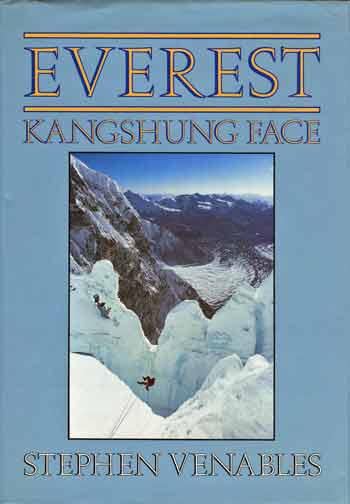

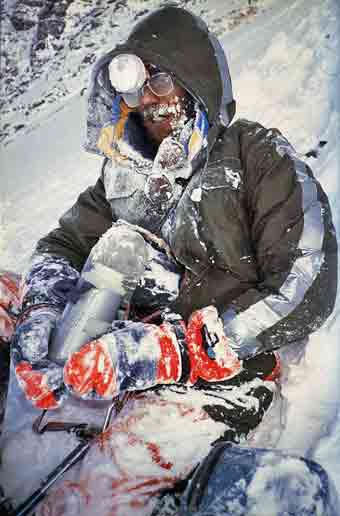

by Stephen Venables. Published 1989. This book starts off almost as a guide book for the trek to the little known and little climbed Everest East, or Kangshung face. The trek is spectacular, with the culmination being the best mountain view in the world in my opinion: Chomolonzo, Makalu, Kangchungtse, Petangtse, Shartse, Lhotse Shar, Lhotse, the South Col, and the dramatic snow covered Everest east face.
The 1988 climb itself is dramatic and dangerous, illustrated with spectacular photos, like the one on the cover showing a Tyrolean traverse across an enormous crevasse. Stephen Venables reached the summit of Mount Everest on May 12, 1988, only the second summit from the Kangshung East side. Venables descent from the summit in a blizzard is as chilling and frightening as Maurice Herzog's Annapurna, with Stephen having to bivouac just below the summit. At one point in his descent, he sits in the snow and considers just staying there and dying.
The story is very exciting. The photos are excellent. I had the pleasure of briefly meeting Stephen Venables on my trek to Kangshung Face in 1998.
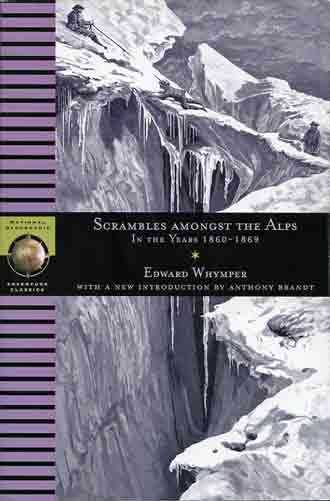
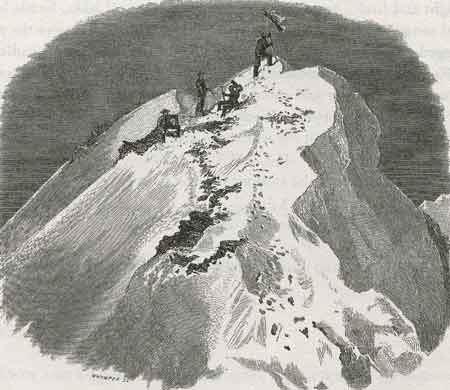

by Edward Whymper. Originally Published in 1871. Whymper details his Alps climbs in the 1860s with many first ascents including Mont Pelvoux in 1861, Barre des Écrins in 1864, Mont Dolent and Aiguille d'Argentičre in 1864, and Grand Cornier, Pointe Whymper on the Grandes Jorasses, and Aiguille Verte in 1865. But Whymper will always be remembered for the first ascent of the Matterhorn on July 14, 1865.
The Matterhorn was considered to be mountaineering's biggest challenge at the time, and Whymper met with failure again and again. Finally on his eighth attempt he finally succeeded, becoming the first man to reach the summit on July 14, 1865.
On the descent, tragedy struck when four members of the party slipped and were killed, and only the breaking of the rope saved Whymper and the two remaining guides from the same fate. A controversy ensued as to whether the rope had actually been cut, but a formal investigation could not find any proof.
The accident haunted Whymper: "Every night, do you understand, I see my comrades of the Matterhorn slipping on their backs, their arms outstretched, one after the other, in perfect order at equal distances - Croz the guide, first, then Hadow, then Hudson, and lastly Douglas. Yes, I shall always see them."
I thoroughly enjoyed the parts of the book dedicated to climbing and was struck by Whymper's adventurous spirit, and his dedication and perseverance. The book does drag on a bit in a few parts with chapters on the technical details about glaciers and railway tracks. The 130 illustrations, many woodcut by Whymper himself, bring the story to life, and are almost as good as photographs.
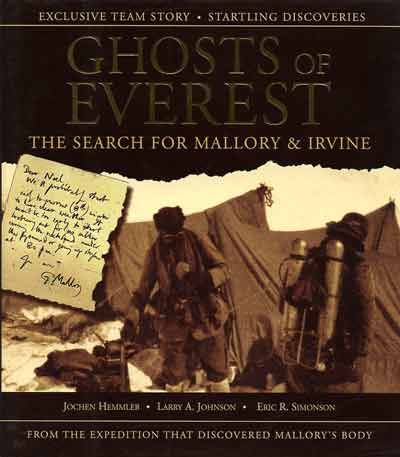
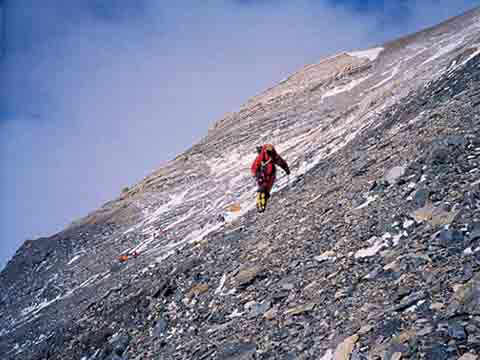
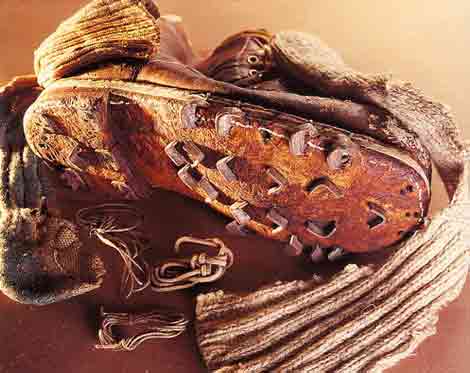

by Jochen Hemmleb, Larry A. Johnson, Eric R. Simonson, William E. Nothdurft. Published 1999. The 1999 Mallory and Irvine Research Expedition discovered the body of George Mallory high on Mount Everest. And what a sight it was - his alabaster body perfectly preserved with his beard stubble still visible.
The book contains the known history of June 6, 1924 along with Jochem's atempt to piece together what might have happened. The photographs of Mallory and his personal effects, including his boot, watch, letters and pocket knife, are fascinating. The following websites contains lots of information and photos: affimer.org, and Nova.
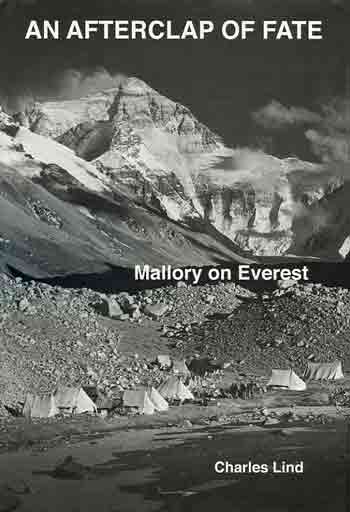

by Charles Lind. Published 2006. The perfect companion book to Ghosts of Everest (or is it the other way round?). In this winner of the 2006 Boardman Tasker Prize, Lind reconstructs Mallory's fateful 1924 climb, beautifully written in almost a poetic style. He tells the story from the perspective of what he thinks Mallory may have been thinking, basing it on Mallory’s letters, what is known of his life and climbing ability, and the findings of the 1999 expedition that found his body. He also provides lots of background on the times that Mallory lived in to help explain what he is thinking. Here are a few of my favourite excerpts:
We come to the mountains to live life more intensely … to be in the full current of the concentration of our vital senses … not to die but to experience the marrow of our being.
Let’s start to look for cracks in the rock, the natural fault lines in its defences. ‘It’s only difficult if it’s not impossible’.
If I should die … think only … some snowy terrace of a foreign mountain … forever England ... I must get back … back to England
To speak the name of the dead is to make them live again …

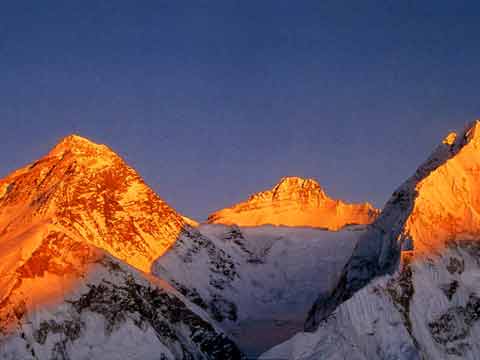
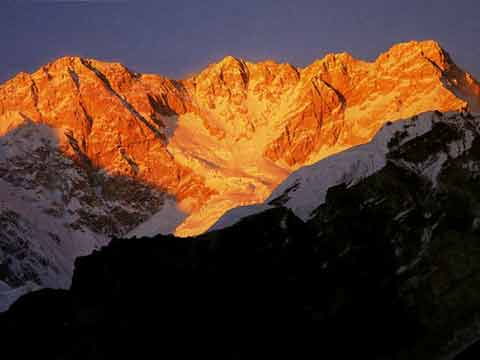

by Richard Sale, John Cleare ((Photographer). Published 2000. Highly recommended! The book details the exploration, first ascent, and other major ascents of all 14 8000m peaks, including spectacular photos.
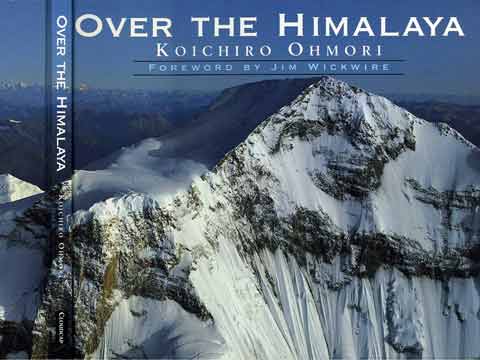
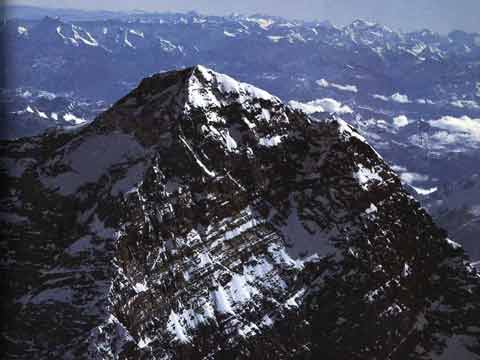
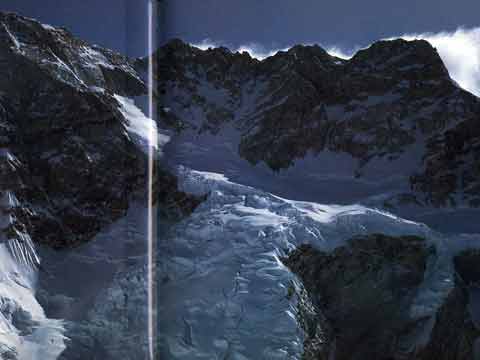

by Koichiro Ohmori. Published 1998. One of Michael Chessler's Best Mountain Photo Books. This book features 44 spectacular 2-page aerial photos of the 8000m Nepalese mountains - Kangchenjunga, Makalu, Everest and Lhotse, Cho Oyu, Manaslu, Annapurna and Dhaulagiri (cover) - and several others, including Jannu, Nuptse, and Ama Dablam. Route diagrams and some basic history of the first few ascents are also included.
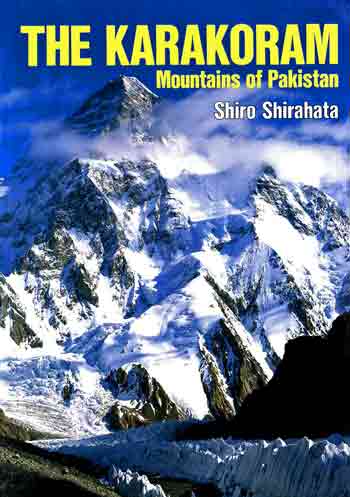
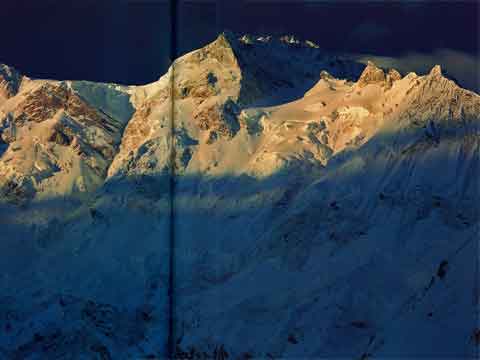
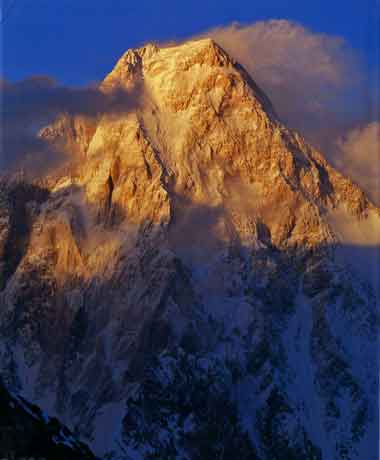

by Shiro Shirahata. He may just be the best mountaineering photographer ever. This coffee-table sized book provides 101 stunning large photographs printed on glossy quality paper.
This book contains K2 (cover), Broad Peak, the Gasherbrums, Chogolisa, Nanga Parbat, and Tirich Mir. The photo of Gasherbrum IV on the back cover is stunning.

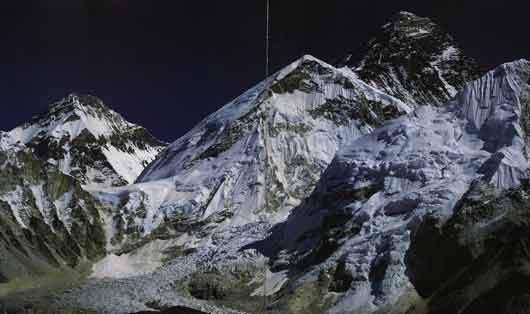


by Shiro Shirahata. Published 1983. One of Michael Chessler's Best Mountain Photo Books. A large, heavy quality paper, coffee-table type book featuring 115 spectacular photos, over half double-pages, of the 8000m Nepalese mountains - Kangchenjunga, Makalu, Everest and Lhotse (cover), Cho Oyu, Manaslu, Annapurna, Dhaulagiri - and many others, including Jannu, Nuptse, and Ama Dablam.
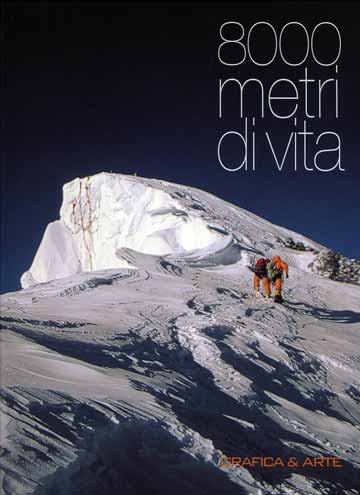
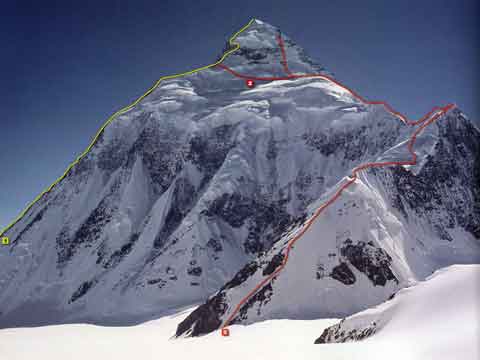
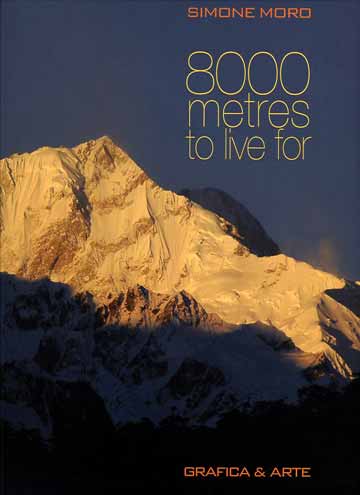

by Simone Moro. Published 2008. In Italian and English. This coffee-table size book features excellent photos from all 14 8000m peaks. Each 8000m peak has a brief history, a photo of each face showing the climbing routes, and lots of excellent photos.
The photos and route diagrams are excellent.
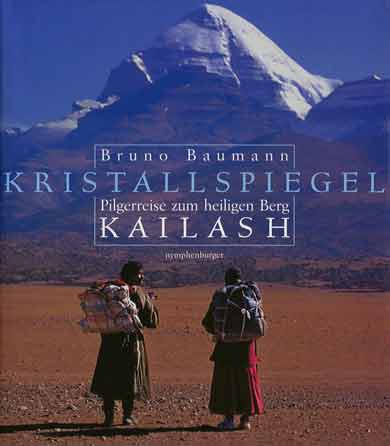
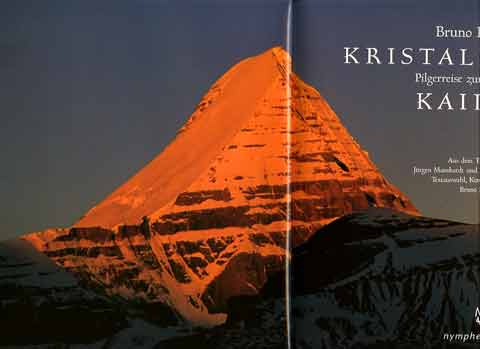
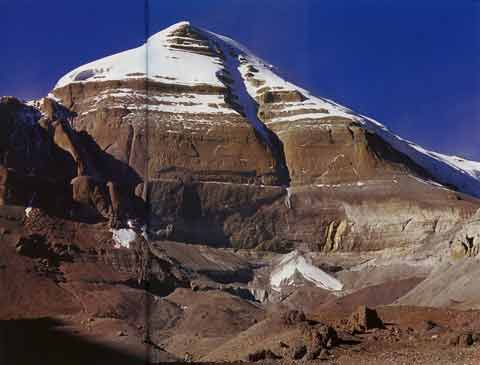

by Bruno Baumann. This is an absolutely excellent coffee-table-type photographic account of Mount Kailash, Lake Manasarovar, Tirthapuri and Tsaparang (Guge Kingdom). The photo captions are in German, but the photos speak for themselves. You can also check out bruno-baumann.de to see some of his photos.
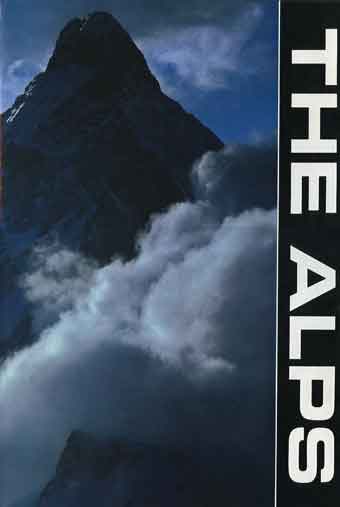

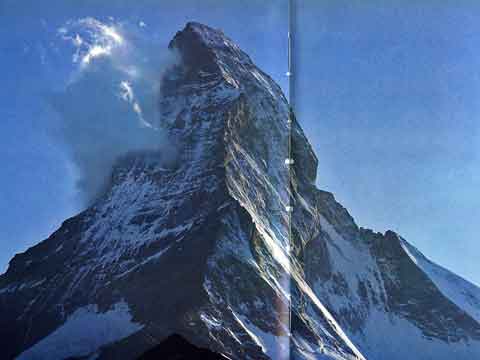
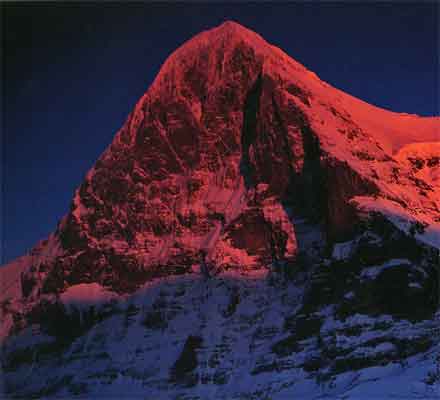

by Shiro Shirahata. He may just be the best mountaineering photographer ever. This coffee-table sized book provides 104 stunning large photographs printed on glossy quality paper.
This book contains spectacular photos of the Alps, with chapters on Le Massif du Mont Blanc, Valais including the Matterhorn, Berner Oberland including the Eiger, Alpi Bernina and Dolomiti.

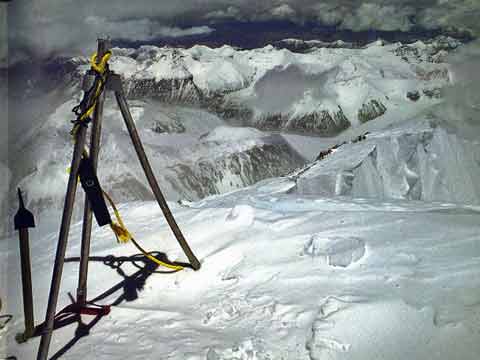
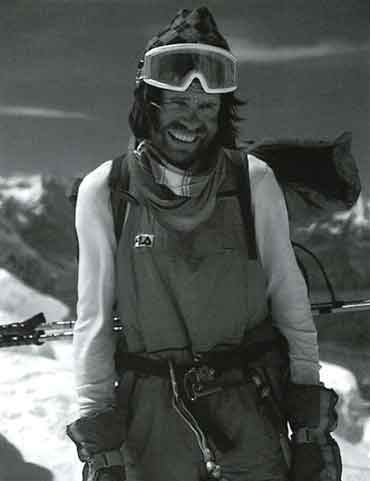

by Reinhold Messner. Published 1999. One of Michael Chessler's Top 100 Mountaineering Books. Messner briefly details his ascents of all 14 8000m peaks, documented with his photos. He also includes route diagrams and some basic history of the first few ascents.

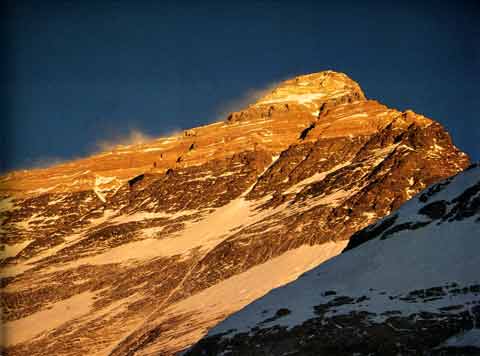
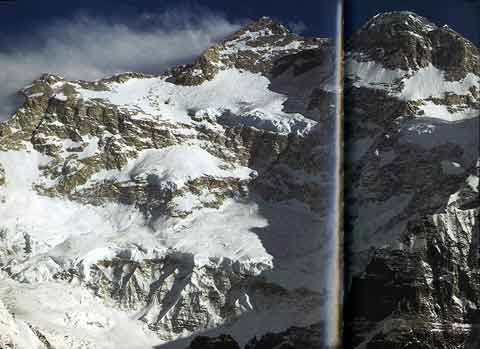

by Andy Fanshawe, Stephen Venables. Published 1996. This book briefly details 40 of the world's finest climbs on mountains in Pakistan (including Broad Peak, K2 and Nanga Parbat), India, Nepal and Tibet (including Annapurna, Shishapangma, Cho Oyu, Everest, Makalu and Kangchenjunga). Each climb is illustrated with many excellent photos, climbing routes, and summary statistics and information. Each area has an excellent overview map. The front cover is Kangchenjunga.
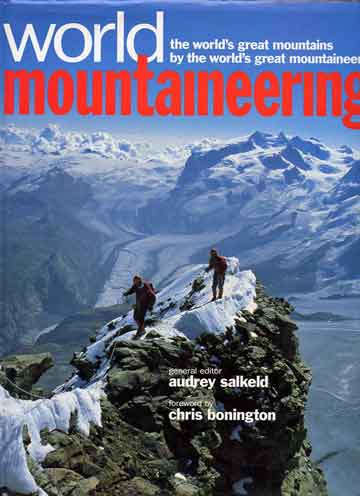

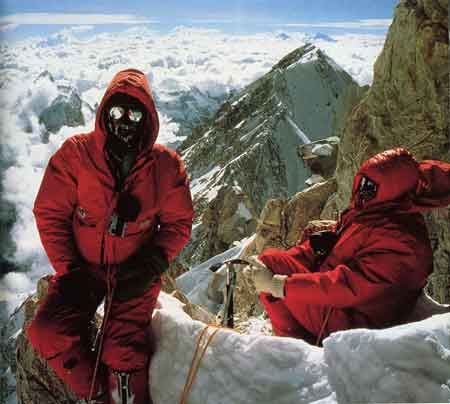

by Audrey Salkeld. Published 1998. The book briefly details 52 of the world's finest climbs, including Kangchenjunga, documented with photos, excellent aerial-type maps, and a basic climbing history.
.jpg)
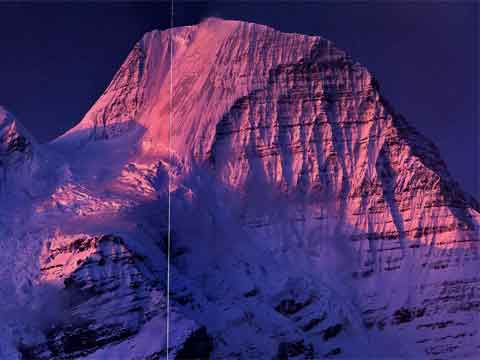


by Shiro Shirahata. He may just be the best mountaineering photographer ever. This coffee-table sized book provides stunning large photographs printed on glossy quality paper.
This book contains 107 spectacular photos of the Canadian Rockies, including Mount Robson and Mount Assiniboine.